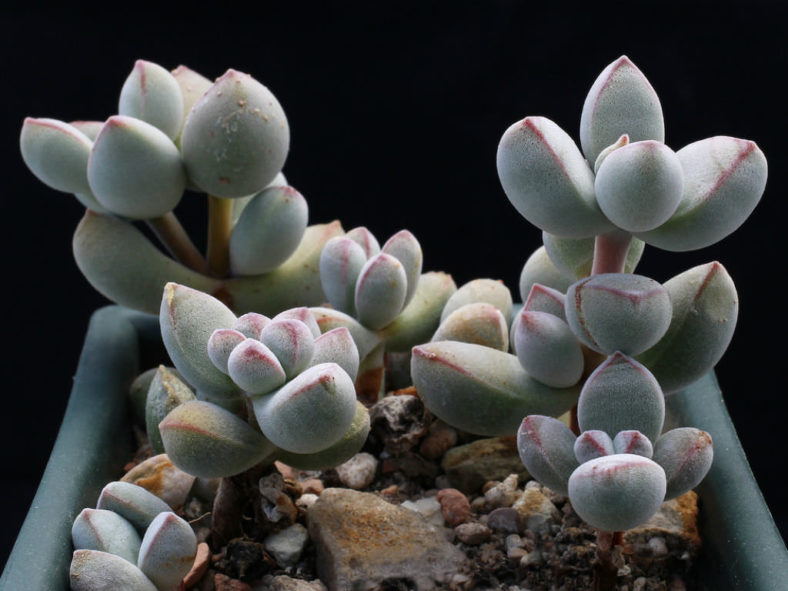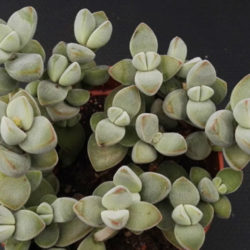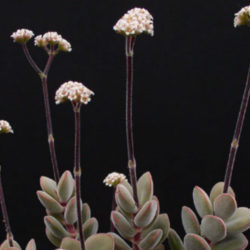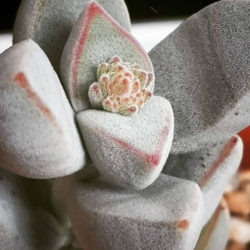Scientific Name
Crassula sericea Schönland
Synonym(s)
Crassula sericea var. sericea
Scientific Classification
Family: Crassulaceae
Subfamily: Crassuloideae
Genus: Crassula
Description
Crassula sericea is a small succulent with short, erect branches with green to grey-green or greyish-brown leaves that are densely covered with spreading or recurved hairs and often somewhat brown along the margins. It grows up to 8 inches (20 cm) tall, usually much-branched, forming a dense clump. The leaves are oblanceolate or obovate, rarely elliptic to orbicular, usually rounded at the apex, measuring up to 1.4 inches (3.5 cm) long and wide. The upper surface of the leaves is flat to slightly convex, while the lower surface is more or less convex.
The flowers are tubular with green hairy sepals and cream to pale yellow, rarely tinged pink petals. They appear in dense clusters on slender, hairy stalks that grow up to 4 inches (10 cm) long, mainly during the winter.
Origin
Crassula sericea is native to southern Namibia and South Africa (Northern Cape). It grows in rock crevices, often under overhanging rocks.

Hardiness
USDA hardiness zone 10b to 11b: from 35 °F (+1.7 °C) to 50 °F (+10 °C).
How to Grow and Care
Crassulas are easy to grow, but they are susceptible to mealy bugs and fungal diseases. As with all succulents, overwatering is sure to be fatal, so err on the side of too dry rather than too wet. Never let your Crassula sit in water. If you water from beneath by letting the plant sit in a saucer of water, make sure to pour off any excess water after a few minutes.
Crassulas are generally started by division, offsets, or leaf cuttings. Plants can be easily propagated from a single leaf: sprout leaves by placing them into a succulent or cacti mix, then covering the dish until they sprout.
Repot as needed, preferably during the warm season. To repot a succulent, make sure the soil is dry before repotting, then gently remove the pot. Knock away the old soil from the roots, making sure to remove any rotted or dead roots in the process. Treat any cuts with a fungicide. Place the plant in its new pot and backfill with potting soil, spreading the roots out as you repot. Leave the plant dry for a week or so, then begin to water lightly to reduce the risk of root rot.
See more at How to Grow and Care for Crassula.
Varieties
Links
- Back to genus Crassula
- Succupedia: Browse succulents by Scientific Name, Common Name, Genus, Family, USDA Hardiness Zone, Origin, or cacti by Genus
Photo Gallery
Click on a photo to see a larger version.


